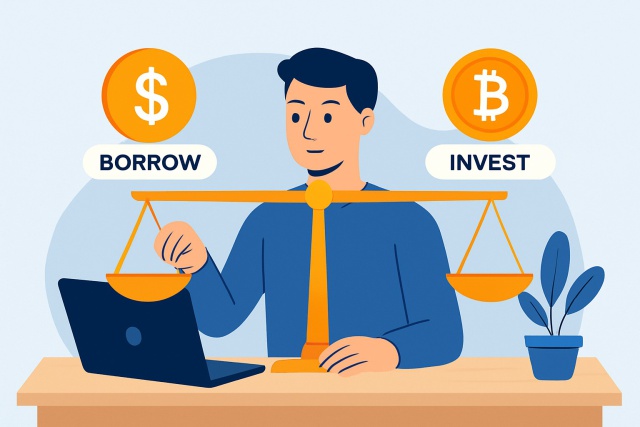Liquidity Pools Explained for DeFi Beginners


To get liquidity pools explained, think of them as the unsung heroes of decentralized finance (DeFi), letting users swap cryptocurrencies without having to lean on old-school middlemen like banks or centralized exchanges. They are essentially a communal pot of liquidity that anyone can throw into or take from.
What Exactly Are Liquidity Pools Anyway?
A liquidity pool is like a communal pot of cryptocurrencies gathered from a bunch of users, all working together to keep trading humming along smoothly on decentralized platforms. Instead of the old-fashioned way of pairing buyers and sellers one by one, these pools let anyone jump right in and swap tokens instantly within the pool
- Liquidity pools are decentralized buckets of digital assets that users chip in to create.
- Instead of the old-school order books, they lean on automated market makers to keep things running smoothly.
- Individuals known as liquidity providers roll up their sleeves by depositing pairs of tokens, playing a hands-on role.
- The whole system is kept honest and transparent thanks to smart contracts handling the pools—no middlemen needed.
- Cutting out central intermediaries, these pools make trading feel a lot more direct and frictionless.
What Makes Liquidity Pools the Heartbeat of DeFi?
Liquidity pools let you trade tokens on the spot by always having a steady supply ready to swap so you’re not left twiddling your thumbs waiting or sweating through wild price swings like on traditional exchanges. By tossing out centralized middlemen they champion a more open and secure DeFi world.
- Liquidity pools play a big role in pumping up overall market liquidity, making trading feel quicker and a whole lot smoother on the whole.
- They let you swap tokens almost instantly, cutting out the need to wait around for a counterparty to show up.
- The fees are usually lighter on your wallet compared to those traditional exchanges that sneak in middlemen and their charges.
- Anyone can jump in and add liquidity without jumping through hoops or waiting for a stamp of approval.
- They open doors for yield farming and staking opportunities, giving DeFi that extra boost to keep growing and evolving.
What Exactly Are Liquidity Pools and How Do They Actually Work? Liquidity Pools Explained
Liquidity pools work by having users deposit pairs of tokens into a smart contract that safely holds these assets. The pool uses an algorithm to figure out prices on the fly based on current token ratios. Traders can swap tokens instantly from the pool while liquidity providers earn a slice of the transaction fees proportional to their contribution.
A user tosses in equal values of two different tokens to the liquidity pool—think of it as a balanced mix to keep things fair.
These tokens get securely locked inside a smart contract that manages the whole pool like a digital safe.
Traders can jump in and swap one token for another on the spot with no waiting.
The pool’s clever algorithm adjusts token prices based on supply and demand to keep everything running smoothly.
Meanwhile, liquidity providers rake in fees from trades, getting their fair slice according to their contribution to the pool.
Getting to Grips with Automated Market Makers (AMMs)
Automated Market Makers or AMMs are clever protocols that step in for traditional order books on exchanges by relying on mathematical formulas to figure out and tweak prices within liquidity pools. They keep the trading wheels turning smoothly by automatically pricing tokens according to the pool's reserves, making it possible for trades to happen in a trustless and permissionless manner—no need for buyers and sellers to play the classic game of matching orders directly.
Think of AMMs as your friendly neighborhood vending machines for cryptocurrencies. They tweak prices on the fly depending on what’s stocked inside, no humans needed, which means buying and selling happens quick as a flash and without a hitch.
Popular AMM Models Explained The Ever-Reliable Constant Product Formula
A common model you will often see in AMMs goes by the name constant product formula, neatly captured as x * y = k. Here x and y stand for the amounts of two tokens in the pool while k is a fixed value that never changes. The neat trick of this formula is that it keeps the product of the token reserves steady as a rock no matter how much trading happens.
| Variable | Meaning | Description |
|---|---|---|
| x | Token A reserve | The current amount of token A tucked away in the liquidity pool |
| y | Token B reserve | The current amount of token B stashed in the liquidity pool |
| k | Constant | The magic number that’s the product of the reserves and somehow never changes, no matter how many trades happen |
Whenever traders swap tokens, they shuffle around the reserves x and y, but here’s the kicker: the product x * y always adds up to k. This nifty rule keeps prices flexing naturally as the pool’s ratios shift under the hood.
Who Usually Steps Up to Provide Liquidity, and How Do They Do It?
Anyone who owns cryptocurrencies can step up as a liquidity provider simply by depositing their tokens into a liquidity pool. When they add liquidity, they receive LP tokens that represent their slice of the pool pie.
- Choose a decentralized platform or exchange that allows you to dive into liquidity pools. Pick one that feels right.
- Find a pair of tokens with equal value to contribute to the pool.
- Deposit those tokens into the smart contract, which safely locks them in the pool.
- Receive LP tokens in return, acting as your handy receipt and proof of your slice of the pool pie.
- Sit back and watch as you earn a share of the trading fees, with the chance to snag some extra rewards along the way.
What Risks Are Involved in Providing Liquidity? Let’s dive into the fine print and uncover what could possibly trip you up along the way.
Providing liquidity can be a nice way to earn some profits, but it’s not all sunshine and rainbows. It comes with risks like impermanent loss, which happens when token prices drift apart inside a pool. If that wasn’t enough to keep you on your toes, vulnerabilities in smart contracts or unexpected market jolts can also throw a wrench in your returns and put your capital at risk.
- Impermanent loss kicks in when the prices of tokens in the pool swing around, sometimes leaving you worse off than if you would simply held onto the tokens yourself. It’s one of those quirks that can catch you off guard.
- Bugs or vulnerabilities lurking in smart contracts can sneakily drain your funds from the pool, reminding us all that no code is ever perfect.
- Sudden, sharp market moves have a knack for slashing returns or causing some headaches with short-term liquidity—that rollercoaster ride is not for the faint-hearted.
- Pulling your liquidity out during choppy market conditions might lock in losses, turning what could have been a minor setback into a sting you’ll remember.
- Different platforms bring their own set of risks, largely shaped by their unique protocol designs and track records when it comes to security so it’s wise to keep an eye on those details before jumping in.
A Down-to-Earth Example of Jumping Into a Liquidity Pool on Uniswap
For those dipping their toes in for the first time, adding liquidity on Uniswap is surprisingly straightforward. After setting up a crypto wallet like MetaMask which can be a bit intimidating at first, users pick a token pair and deposit equal amounts into the pool before approving the transaction. Once they’ve added their liquidity they receive LP tokens.
Link your crypto wallet—MetaMask works like a charm—to the Uniswap platform.
Choose the token pair you want to add liquidity for, such as ETH and USDC.
Type in the amount of one token and Uniswap will figure out the right amount for the other.
When your wallet nudges you, approve the smart contract to spend your tokens.
Confirm the deposit transaction and you’ll receive your liquidity provider (LP) tokens to track any fees you earn over time.

Key Tips for Beginners Diving Into Liquidity Pools in DeFi
- Start with small contributions to get a real feel for how pools and fees work while keeping your exposure low.
- Check platforms known for their rock-solid security and regular audits because it is good to know your bases are covered.
- Consider spreading your liquidity across different pools and token pairs. This classic move helps smooth out bumps and reduce risk.
- Keep an eye on fee changes and governance updates as well as any reward programs that might affect your position.
- Make sure you understand impermanent loss and how market swings might impact your assets.
What the Future Holds for Liquidity Pools and DeFi
Liquidity pools are evolving quickly and bringing fresh twists to the DeFi landscape. When you look at the full picture of liquidity pools explained, you see cross-chain pools making their mark by allowing assets to move and trade across different blockchains like they’ve found their way to a global party. Layer 2 scaling solutions are stepping in to slash fees and speed up transactions. This makes it easier for more individuals to jump in and provide liquidity without breaking the bank. Protocols are also brainstorming clever ways to cut down on impermanent loss. This not only helps keep things safer but also boosts the potential returns for liquidity providers—something many appreciate firsthand.






